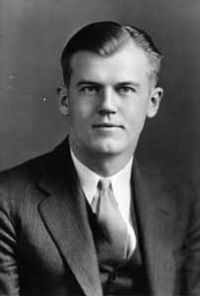Robert J. Van de Graaff
Claimed by Rebecca Kobernat
Robert Jemison Van de Graaff (December 20, 1901 – January 16, 1967) was an American physicist, of Dutch descent, who designed and created his namesake high-voltage generator.

Personal Life and Education
Van de Graaff was born in Tuscaloosa, Alabama as the fourth son of Minnie and Adrian Van de Graaff. After receiving his master's degree from the University of Alabama in 1923, Van de Graaff worked for the Alabama Power company for a year. He then studied at the Sarbonne in France for a year before attending Oxford University as a Rhodes Scholar, where he received his second BS degree and completed his PhD in 1928.
In 1936 he married Catherine Boyden, with whom he had two sons, John and William. Robert J Van de Graaff died in Boston at age 65.
Career
Van de Graaff returned to the United States in 1929 as a National Research Fellow at Princeton University. It was there that he created his first electrostatic generator, with the help of Nicholas Burke. He left Princeton and became a research associate at MIT in 1931. He received a patent for his generator in 1935, the year after he became an associate professor at MIT and he remained in that position until 1960 when he resigned in order to focus his attention on HVEC.
John Trump, an electrical engineering professor at MIT, and Van de Graaff co-founded the High Voltage Engineering Corporation (HVEC) in 1946 for the commercial production of particle accelerators. In the 1950's he invented the insulating core transformer which generated high voltage direct current using magnetic flux, unlike the Van de Graaff generator.
Van de Graaff Generator
Interesting Facts
Van de Graaff's three older brothers all played football at the University of Alabama and made the College Football All-Southern Team. His brother William "Bully" Van de Graaff was named to the All-American team in 1915.